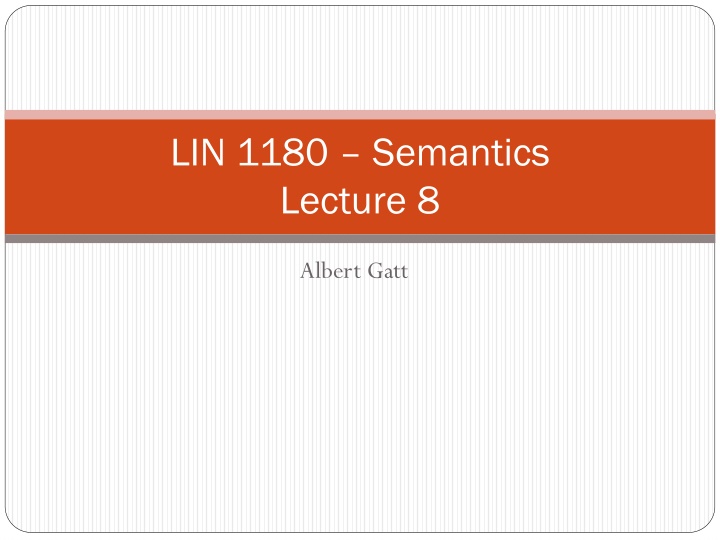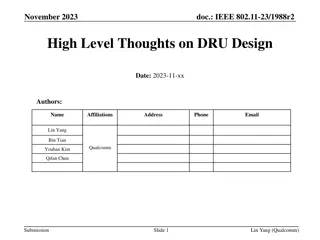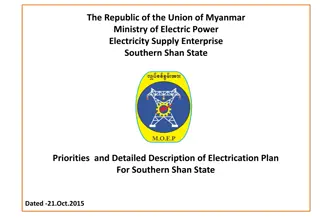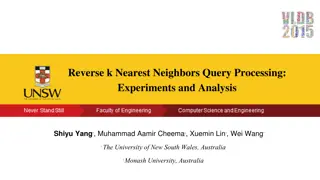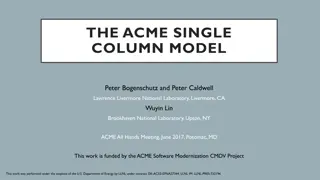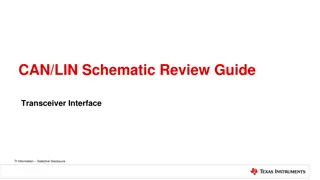LIN 1180
This content delves into the concept of hyponymy, exploring the relationships between terms like hypernym and hyponym. It also discusses hierarchical representations in conceptual networks, inheritance of properties, levels of conceptual representation, and properties of the basic level in semantic analysis.
Download Presentation

Please find below an Image/Link to download the presentation.
The content on the website is provided AS IS for your information and personal use only. It may not be sold, licensed, or shared on other websites without obtaining consent from the author.If you encounter any issues during the download, it is possible that the publisher has removed the file from their server.
You are allowed to download the files provided on this website for personal or commercial use, subject to the condition that they are used lawfully. All files are the property of their respective owners.
The content on the website is provided AS IS for your information and personal use only. It may not be sold, licensed, or shared on other websites without obtaining consent from the author.
E N D
Presentation Transcript
LIN 1180 Semantics Lecture 8 Albert Gatt
Part 1 Hyponymy and other relations
Definition of hyponymy Hyponymy is a relation of inclusion. ANIMAL Arrows can be interpreted as IS- A relations. MAMMAL BIRD Unlike taxonomic sisterhood, which is horizontal, hyponymy is vertical. SPARROW CANARY LIN 1180 -- Semantics
Elements of hyponymy If Y IS-A X then: X is the superordinate or hypernym of Y Y is a subordinate or hyponym of X e.g. HUMAN is the hypernym of MAN, TOOL is the hypernym of CHAINSAW Inclusion: if Y is a hyponym of X then Y contains the meaning of X (plus something extra) e.g. MAN includes all the features of HUMAN, plus the specification of ADULT and MALE. Transitivity: if X IS-A Y and Y IS-A Z, then X IS-A Z LIN 1180 -- Semantics
Transitivity -- illustration A CANARY IS-A BIRD A BIRD IS-A ANIMAL Therefore, a CANARY IS-A ANIMAL ANIMAL MAMMAL BIRD SPARROW CANARY LIN 1180 -- Semantics
Hierarchical representations and inheritance A node in a conceptual network inherits some properties from its superordinate It can also add new properties of its own It can override properties of the superordinate Moves Eats breathes ANIMAL Flies Has feathers BIRD Does not fly OSTRICH Semantics -- LIN 1180
Levels of conceptual representation Rosch et al. 1976 propose 3 levels Superordinate Or top level FURNITURE Basic level: This is the level we tend to use and think about CHAIR TABLE Subordinate level: Much more specific ARMCHAIR Semantics -- LIN 1180
Properties of the basic level The easiest to visualise: easier to imagine a CAR (basic) than a FIAT PUNTO (subordinate) 1. Used for neutral, everyday usage: we re more likely to say that s a dog than that s a dachshund or that s an animal 2. Names of basic-level categories tend to be morphologically simple Compare: spoon vs. teaspoon, soup spoon 3. Semantics -- LIN 1180
More properties of the basic level high distinctiveness maximally different from other categories 4. strong within-category resemblance objects within the category resemble eachother more than they do objects outside the category 5. optimal level of informativeness: it s more informative to say x is a dog than x is an animal but in most cases, saying x is a dachshund is too specific 6. Semantics -- LIN 1180
Special cases of taxonomic relations Sometimes, language exhibits special cases of relations that are: well-established and lexicalised seem to depend on an underlying taxonomy or hierarchy ADULT-YOUNG dog puppy, duck duckling, etc MALE-FEMALE woman man, dog bitch, drake duck, etc NB: These pairs are often asymmetric. The unmarked case in the MALE- FEMALE is the MALE. We tend to use it for the name of the species. LIN 1180 -- Semantics
Meronymy or part-whole A different kind of taxonomic relationship. Arrows are interpreted as HAS-A LEG ANIMAL HAS-A IS-A WING BIRD HAS-A LIN 1180 -- Semantics
Meronymy vs. Hyponymy Meronymy tends to be less regular than hyponymy: NOSE is perceived as a necessary part of a FACE CELLAR may be part of HOUSE, but not necessarily Meronymy need not be transitive: If X HAS-A Y and Y HAS-A Z, it does not follow that Y HAS-A Z window HAS-A pane room HAS-A window ??room HAS-A pane Common-sense knowledge plays a very important role in acceptability of these relations. LIN 1180 -- Semantics
Member-collection relations We often lexicalise names of collections of specific things: flotta (fleet) : a collection of ships mer la (flock): a collection of sheep Native speakers know there is a member-collection relation: flotta (fleet) vapur (ship) armata (army) suldat (soldier) mer la (flock) nag a (sheep) Can be viewed as a special, lexicalised case of meronymy. LIN 1180 -- Semantics
Are collections singular or plural? In many languages, there is the possibility of switching from: a view of a collection as a single entity vs. the contents of the collection as a group or set English: The band played well tonight. It drove the crowd nuts [SG] They drove the crowd nuts [PL] Maltese: L-armata rtirat (The army retreated.SG) ?L-armata rtiraw. (The army retreated.PL) Perhaps not as acceptable? Only with some nouns? LIN 1180 -- Semantics
Part 2 Beyond the lexicon: Overview of sentence relations
In this lecture Having looked in some detail at properties of the lexicon, we now turn to sentences. We discuss meaning relations between sentences truth conditions presupposition LIN 1180 - Semantics
Sentence relations Just as lexical items stand in various relations to one another (hyponymy, etc), so do sentences: Relations between sentences arise due to: the lexical items in them their grammatical structure LIN 1180 - Semantics
Sentence synonymy My brother is a bachelor My brother is an unmarried man 1. 2. (1) and (2) seem to have the same meaning (or almost... Cf. Our discussion of synonymy) LIN 1180 - Semantics
Entailment My sister assassinated the president. The president is dead. 1. 2. (1) entails (2), primarily because of the meaning of assassinate. if (1) is true, then (2) must be true The following are not in an entailment relationship: 3. My sister shot the president. 4. The president is dead. If (1) is negated, it no longer entails (2): My sister did not assassinate the president. LIN 1180 - Semantics
Important properties of entailment A sentence p entails a sentence q if, and only if: q is true whenever p is true q is false whenever p is false This is why entailment is cancelled by negation. LIN 1180 - Semantics
How does entailment arise? Lexical, e.g. hyponymy My sister assassinated X X died. assassinateY includes Y dies I bought a dog I bought an animal dog is a hyponym of animal Syntactic, e.g. active/passive My sister assassinated the president The president was assassinated by my sister. LIN 1180 - Semantics
Contradiction My canary has just escaped from its cage. 2. My canary has never been in a cage. 1. If (1) is true, then (2) cannot be true (and vice versa) (2) contradicts (1) He is a murderer but he s never killed anyone. (3) is also a contradiction 3. LIN 1180 - Semantics
Tautology Albert is Albert This classroom is this classroom. 1. 2. Both (1) and (2) are necessarily true In fact, both are highly uninformative sentences. LIN 1180 - Semantics
